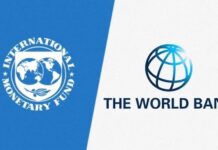The April-to-June 2020 (Gu’) rains have intensified in the Ethiopian highlands and across Somalia, triggering flash flooding in several regions of Somalia especially along the Juba and Shabelle river valleys where water levels have risen sharply.
Some areas have experienced flash and riverine flooding, which has disrupted road networks. Since the beginning of the current rainy season in April, moderate to heavy rains have been reported in many parts of the northern and central regions.
Ongoing flash and riverine flooding in Somalia has affected about 918,667 people, of whom 412,000 have been displaced and 24 killed, in 29 districts, as of 19 May. The risk of disease outbreaks is high due to overcrowding in areas where displaced people are seeking temporary shelter. Belet Weyne in Hiraan region is the most affected district after the Shabelle river burst its banks on 12 May, inundating 85 per cent of Belet Weyne town and 25 riverine villages. According to the district flood taskforce, about 240,000 people were displaced from the town and neighbouring villages between 12 and 18 May. In Jowhar district, Middle Shabelle region, riverine flooding has affected more than 98,000 people in 37 locations, bringing the total affected in Hirshabelle to 338,000 people. According to the Ministry of Humanitarian Affairs and Disaster Management in Hirshabelle State, nearly 40 per cent of those affected in Jowhar have been displaced from their homes.
The flooding in Belet Weyne and Jowhar resulted from a sharp rise in the level of the Shabelle river following heavy rains in Somalia and the Ethiopian highlands. As of 14 May, the main road connecting Belet Weyne town to the airport, UN compound, Ceel Jaale area and the northern regions came close to being cut off due to inundation of the road. On 15 May, the flood taskforce reported that about 1,200 people marooned by flood waters in the Boore highland, upstream of the Shabelle river, about 30 km from Belet Weyne, needed urgent relocation as the water levels around the area continued to rise. At the request of the Hiraan Governor, AMISOM provided a truck to transport a boat to relocate the population to safer areas.
More than 293,900 people have been affected by flash and riverine floods in Gedo, Lower Juba, and Middle Juba regions, including 187,000 people in Gedo region and 165,300 people in Middle and Lower Juba regions as of 14 May. Local authorities in Doolow district reported that 1,200 farms have been inundated and crops covering an estimated 12,000 hectares of farmlands had been destroyed, impacting people’s livelihoods. Twelve villages in Sakow, in Middle Juba – a region under the control of the Al-Shabaab group – are reportedly flooded, affecting more than 17,100 people. Floods are also reported in Kismayo, Abdille Birole, Yontoy, Bula Gudud and Gobweyn; displacing more than 2,200 people and destroying or damaging 32 houses and 269 latrines. Rivers Dawa and Juba levels have continued to rise and the Juba river level at Doolow has reached 0.34 m above highrisk flooding level.
In Banadir region, eight people including six children were killed by torrential rains in Mogadishu on 11 May. The WASH Cluster estimates that the floods displaced 9,200 IDPs mostly from Daynile, Kahda, Wadajir and Dharkenley districts; washed away 460 communal latrines and destroyed houses. Major roads in the city remained impassable from 11-12 May.
The ongoing Gu’ flooding will exacerbate the humanitarian situation, at a time when COVID-19 cases are increasing, and a locust infestation is ongoing to form a ‘Triple Threat’. WHO has warned that the flooding could exacerbate Acute Watery Diarrhoea (AWD) and cholera cases. The fast-spreading COVID-19 pandemic was first confirmed in the country on 16 March. As of 18 May, 1,455 cases of COVID-19 have been confirmed with 57 deaths. At the same time, new swarms of desert locusts are reported in Somaliland, Puntland and Galmudug states. Despite this ‘Triple Threat’, funding for humanitarian operations in Somalia remains very low. As of 16 May, the revised 2020 Somalia Humanitarian Response Plan (HRP) was only 16.8 per cent funded.
The rains are likely to increase the risk of water borne diseases. Since January, over 2,780 cases of acute watery diarrhoea and cholera have been reported; higher than the situation over the same period in 2019, when 1,295 cases were reported.
The humanitarian partners are doing traditional response with distribution of essential supplies and also propose more cash-based interventions to minimise spread of COVID-19 and restrictions imposed that could impact humanitarian access.




